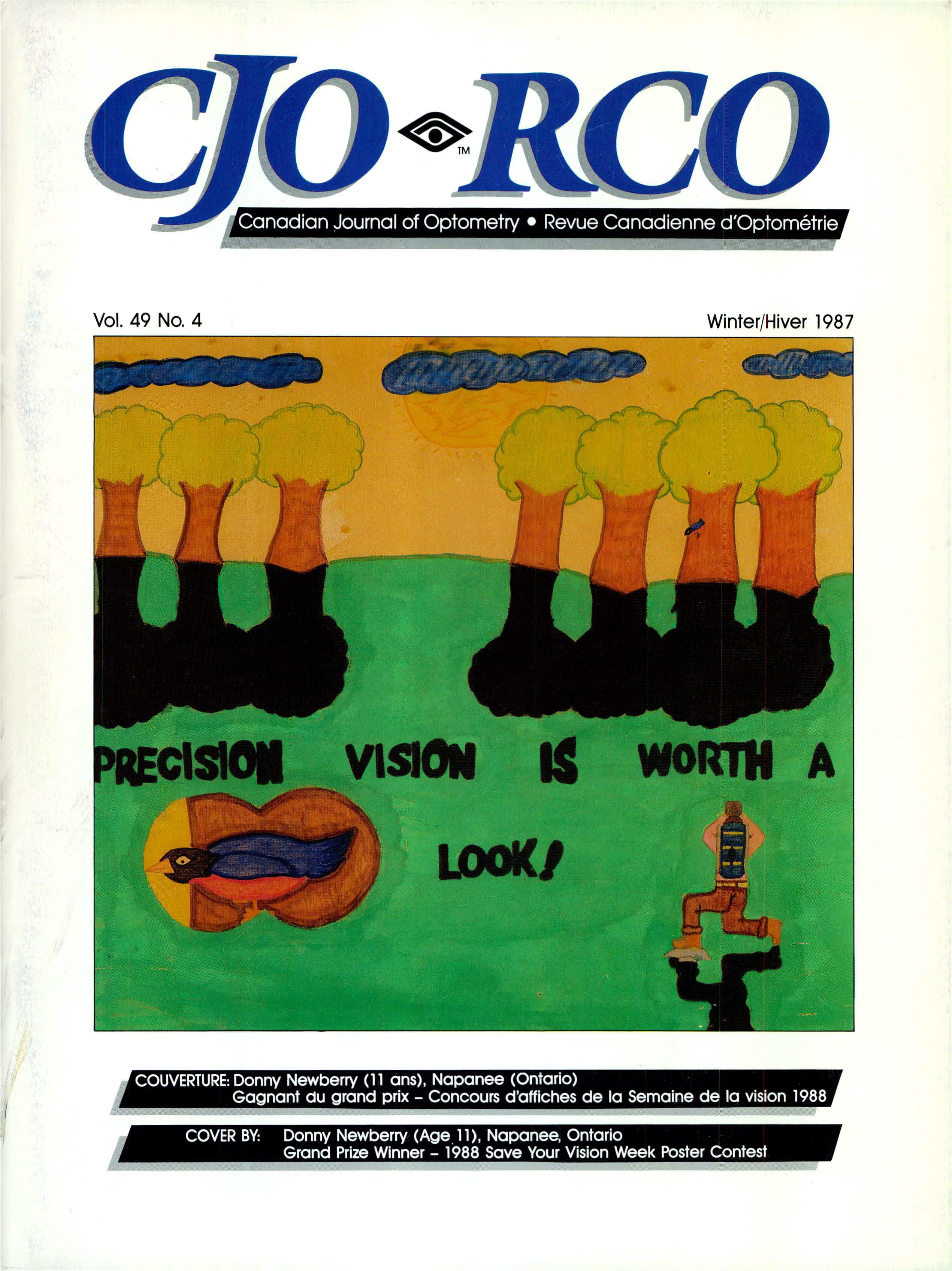Corneal Vascularization in a Group of Soft Contact Lens Wearers: Prevalence, Magnitude, Type and Related Factors
DOI:
https://doi.org/10.15353/cjo.v49i4.4571Abstract
Groups of 827 soft contact lens wearers and 900 non-contact lens wearers were examined for corneal vascularization by means of biomicroscopy. Slit-lamp photographs were taken to record cases of vascularization and to permit measurements of the magnitude of the vascular response. The prevalence of corneal vascularization in the soft contact lens group was 33.9% compared to 2.0% in the non-contact lens group.
Of the soft contact lens related vascular responses, 98.6% were located in the superficial stroma, indicating that the conjunctival circulation is most often involved in corneal vascular responses to soft contact lenses. Vascular penetration radially into the cornea from the limbus did not exceed 4.5 mm in either the study or control groups; 96.8% of the vascular responses being 1.5 mm or less in the soft contact lens group. Age and sex of the patients were not significantly related to the observed frequency of corneal vascularization in either the study or control groups. However, refractive error, daily wearing time and the total length of time soft contact lenses had been worn were significantly related to the observed frequency of corneal vascularization in the soft contact lens group.
Even though sampling error and bias affect this type of study, it appears that corneal vascularization is a frequent ocular response in patients who are wearing daily-wear and extended-wear soft contact lenses. This study supports the recommendation that all soft contact lens patients, including those who may be asymptomatic, should be carefully examined at regular intervals for signs of adverse ocular responses such as corneal vascularization.
Published
How to Cite
Issue
Section
License
Copyright (c) 1987 J.D Jantzi, W.E. Jackson, K.M Smith

This work is licensed under a Creative Commons Attribution-NonCommercial-NoDerivatives 4.0 International License.


